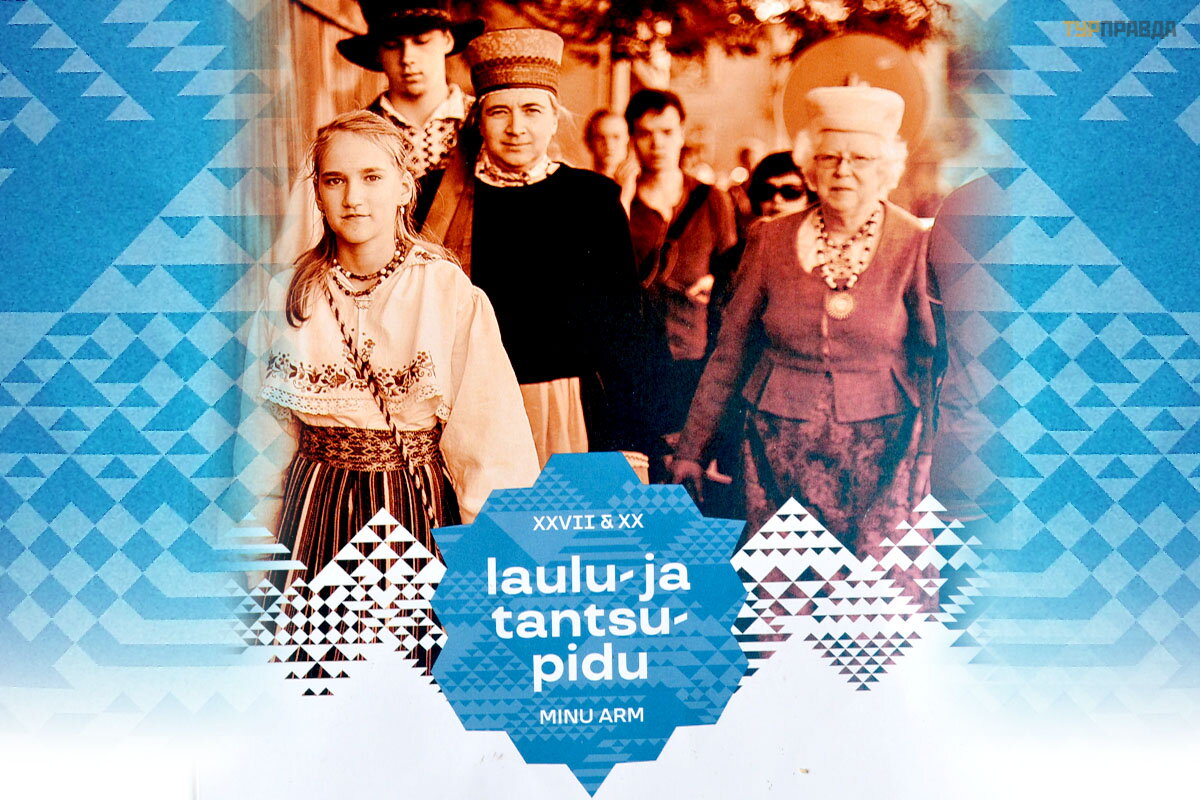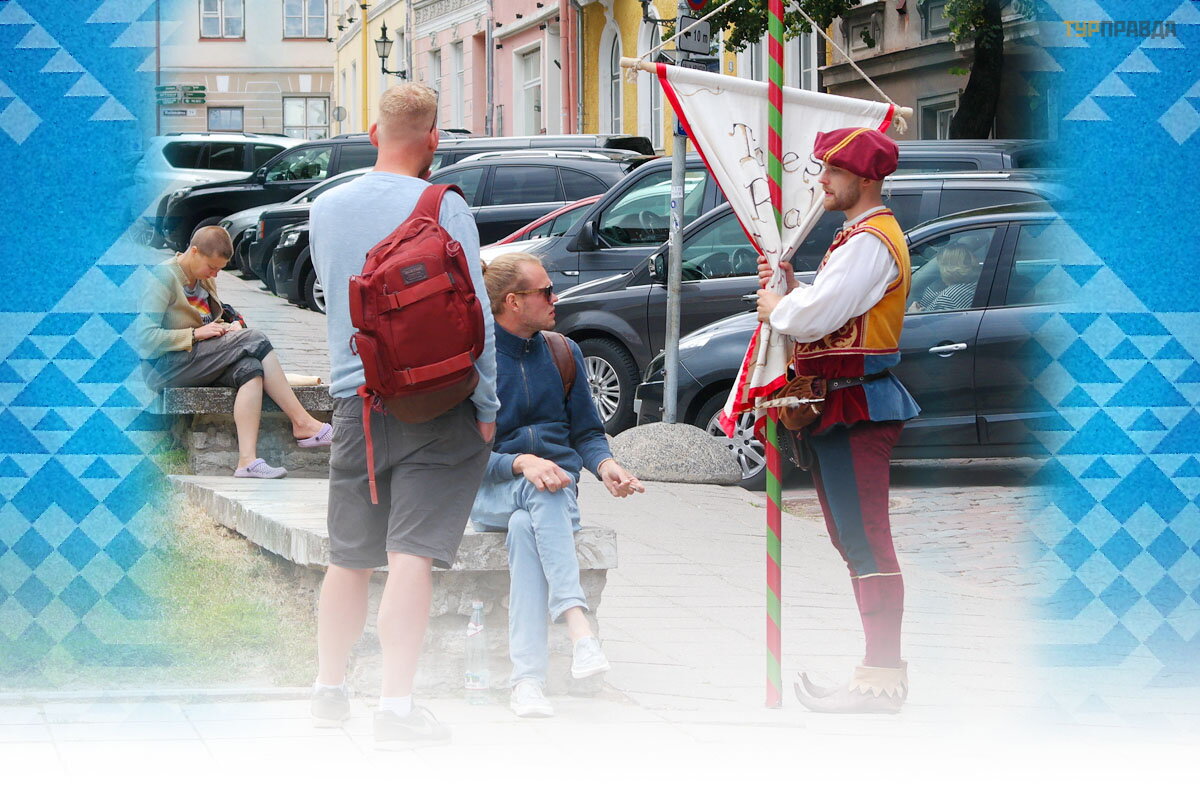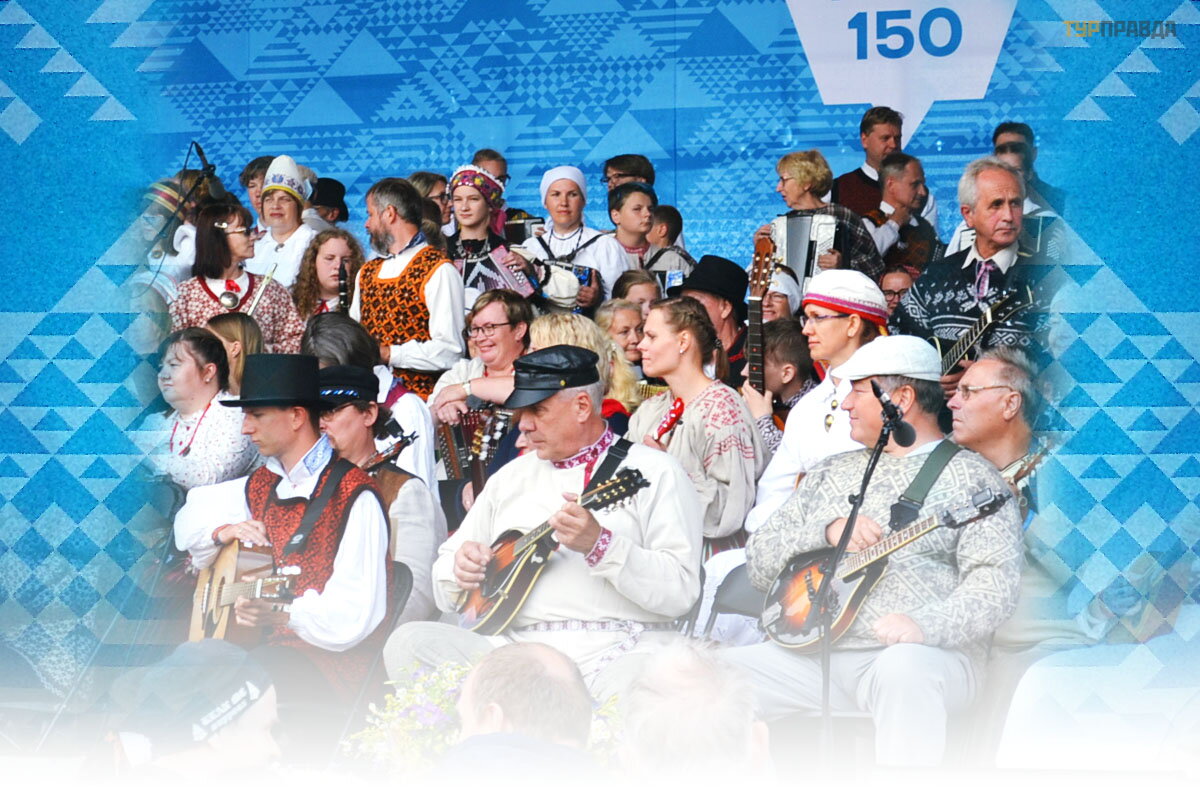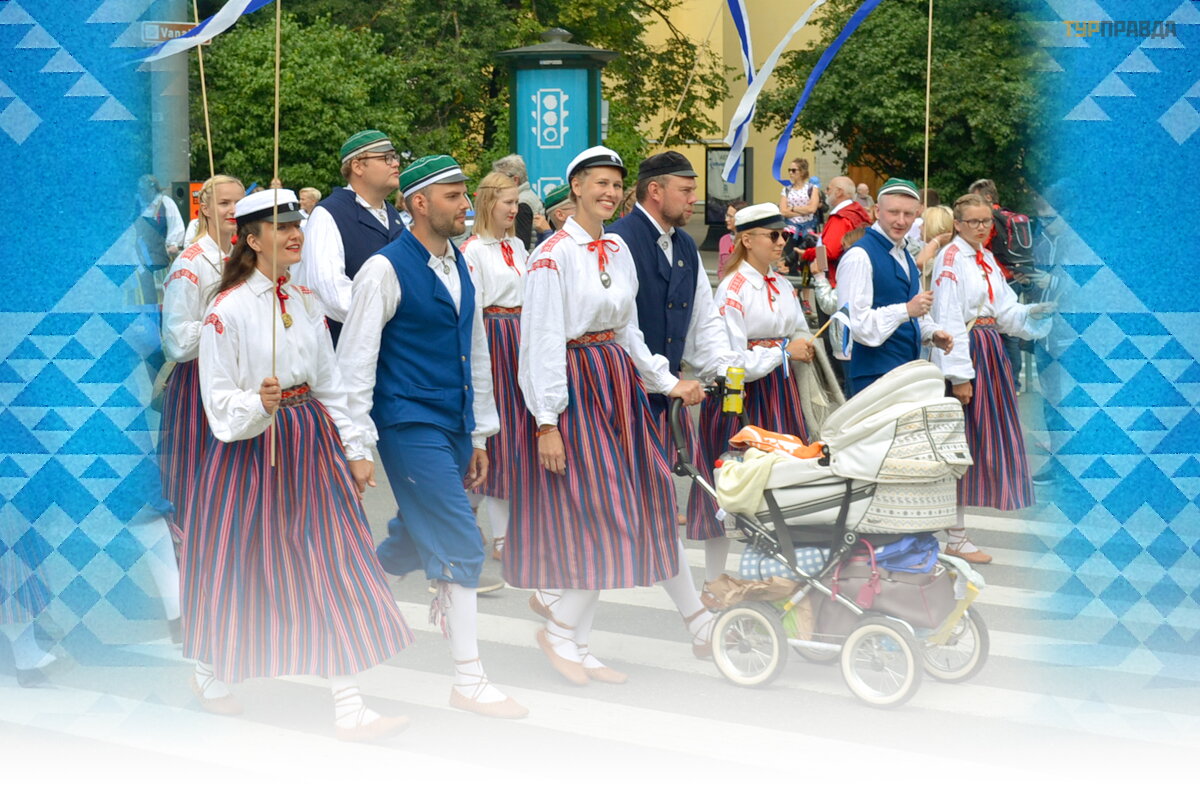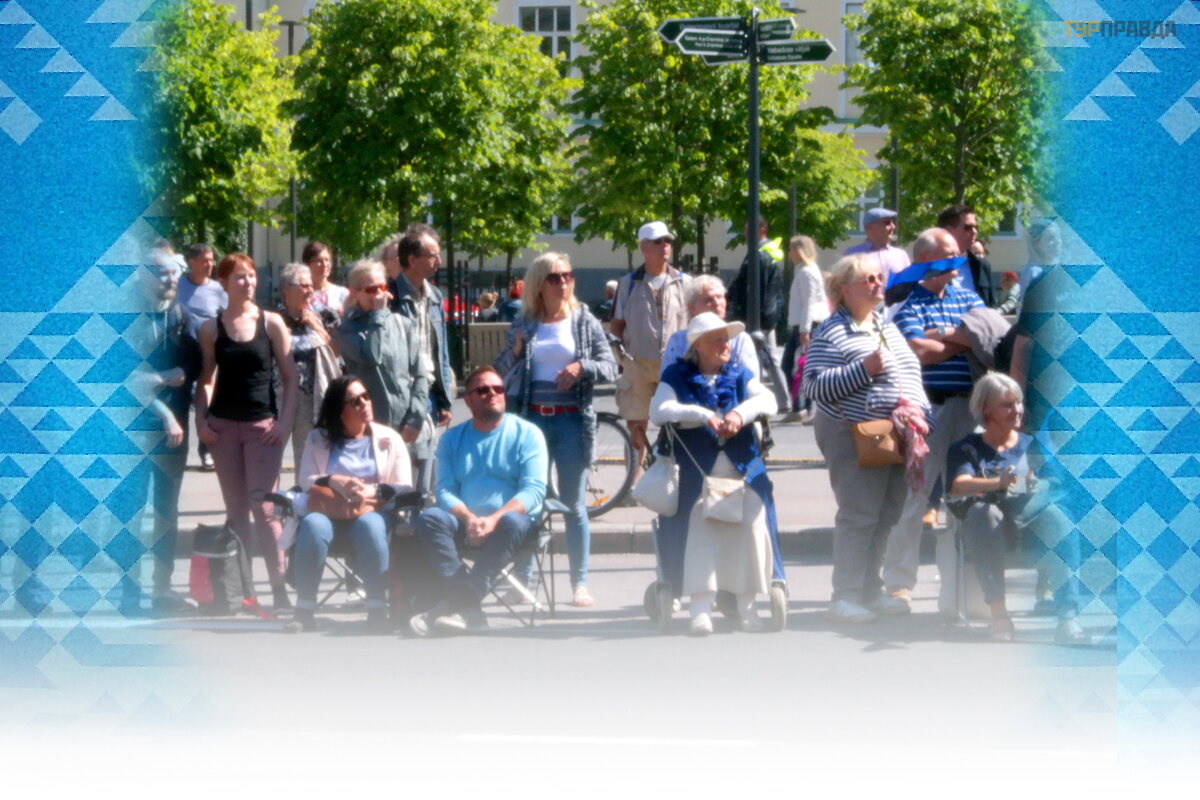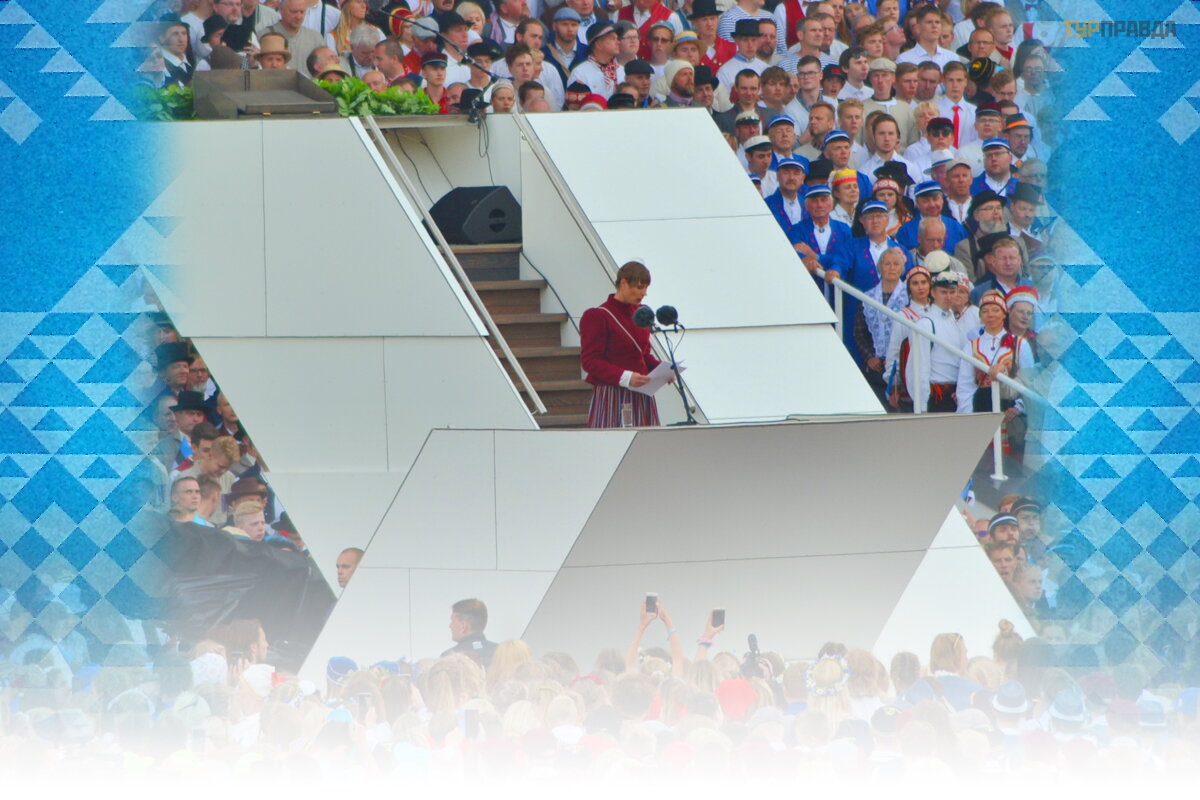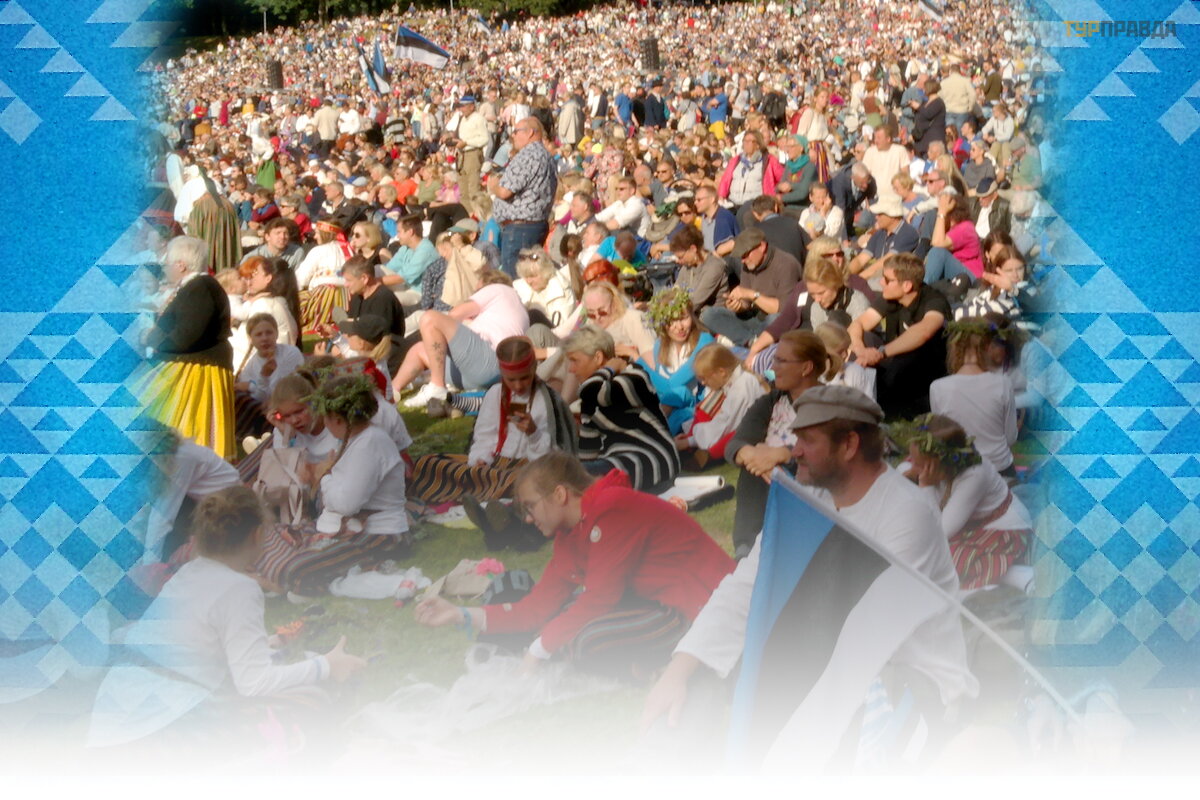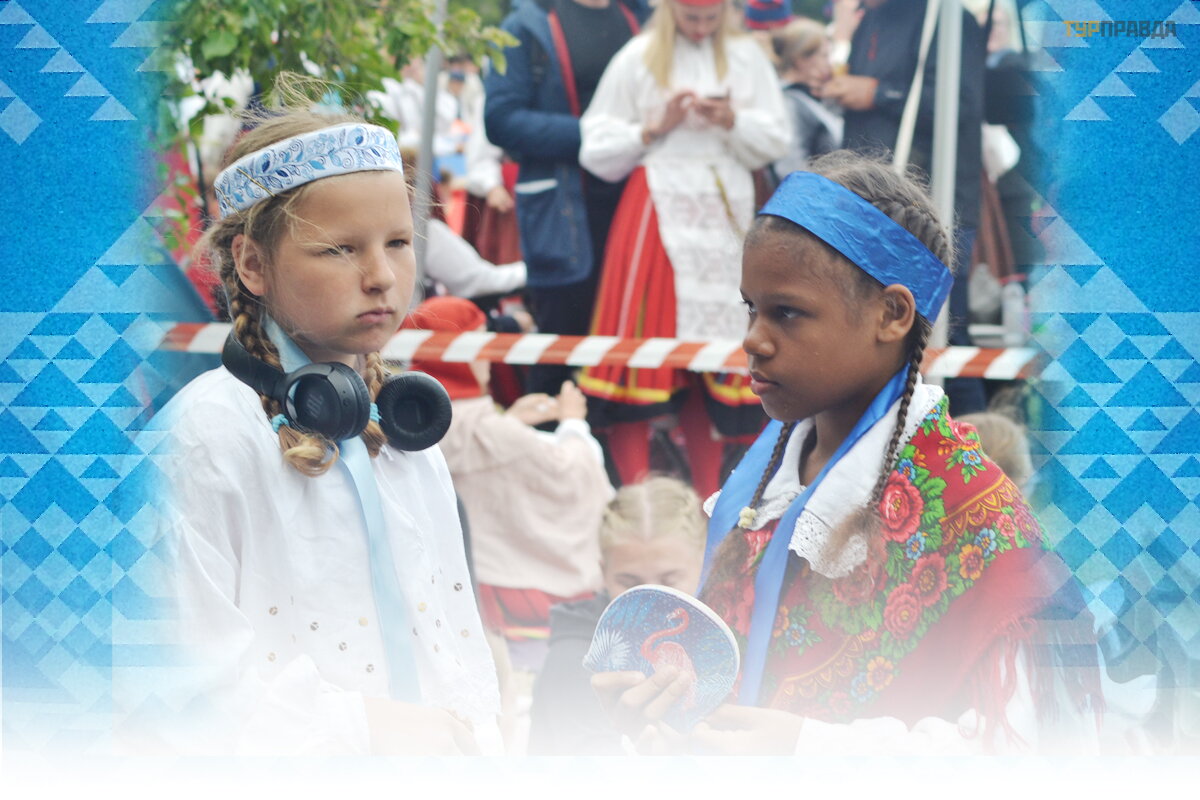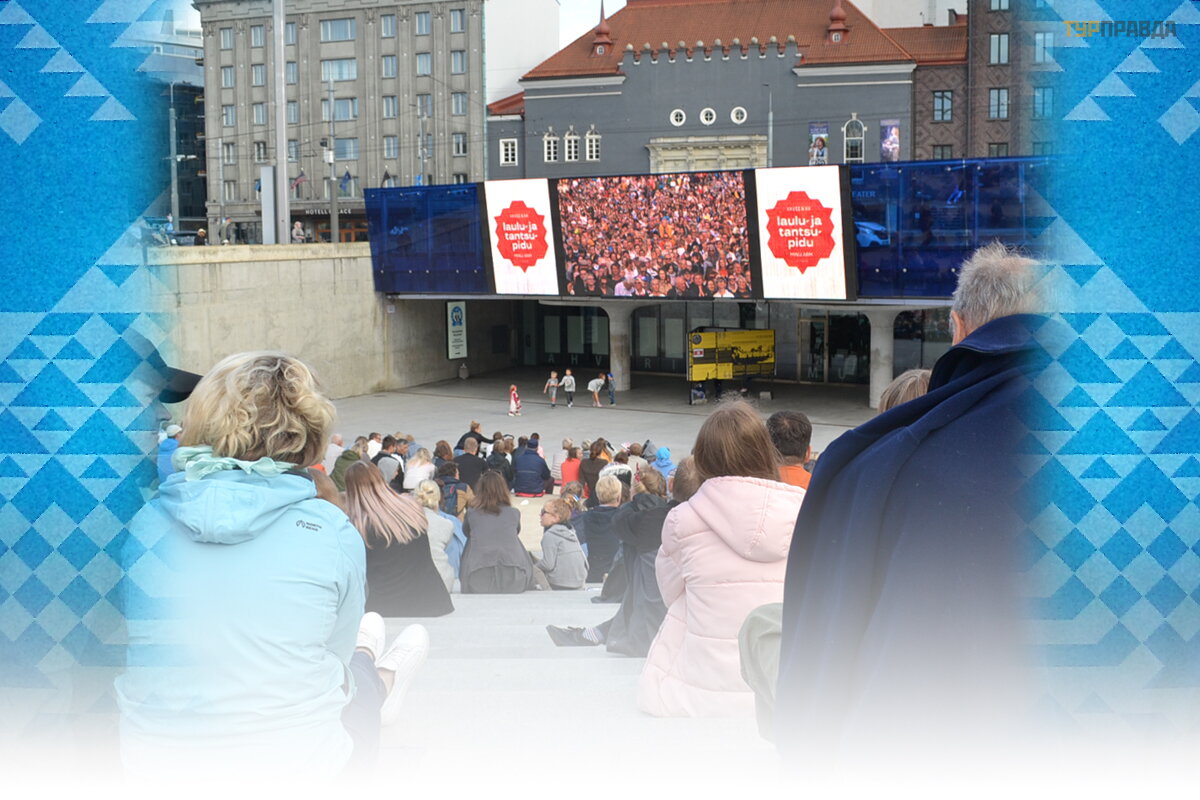During the festival…
Any folklore festival deserves a visit. And if this festival is included in the list of intangible cultural heritage of UNESCO, then this is not even discussed. Therefore, I could not miss the Estonian song and dance festival, especially since our paths with this holiday crossed for the first time in 10 years of constant trips to Estonia.
2019 has been a year full of anniversaries in Estonia: Tallinn is celebrating 800 years since its first mention of itself, and Estonia's beloved Song Festival is 150 years old. Yes, you heard right – for the last 150 years, every five years, Estonians come from all over Estonia and sing their favorite songs in a choir of many thousands. This is a celebration of unity
when thousands of separate Estonian voices merge into a single voice of the Estonian people. And, believe me, this is an amazing event in terms of energy and scope, which you would never expect to see in a country with a population of just over a million people.
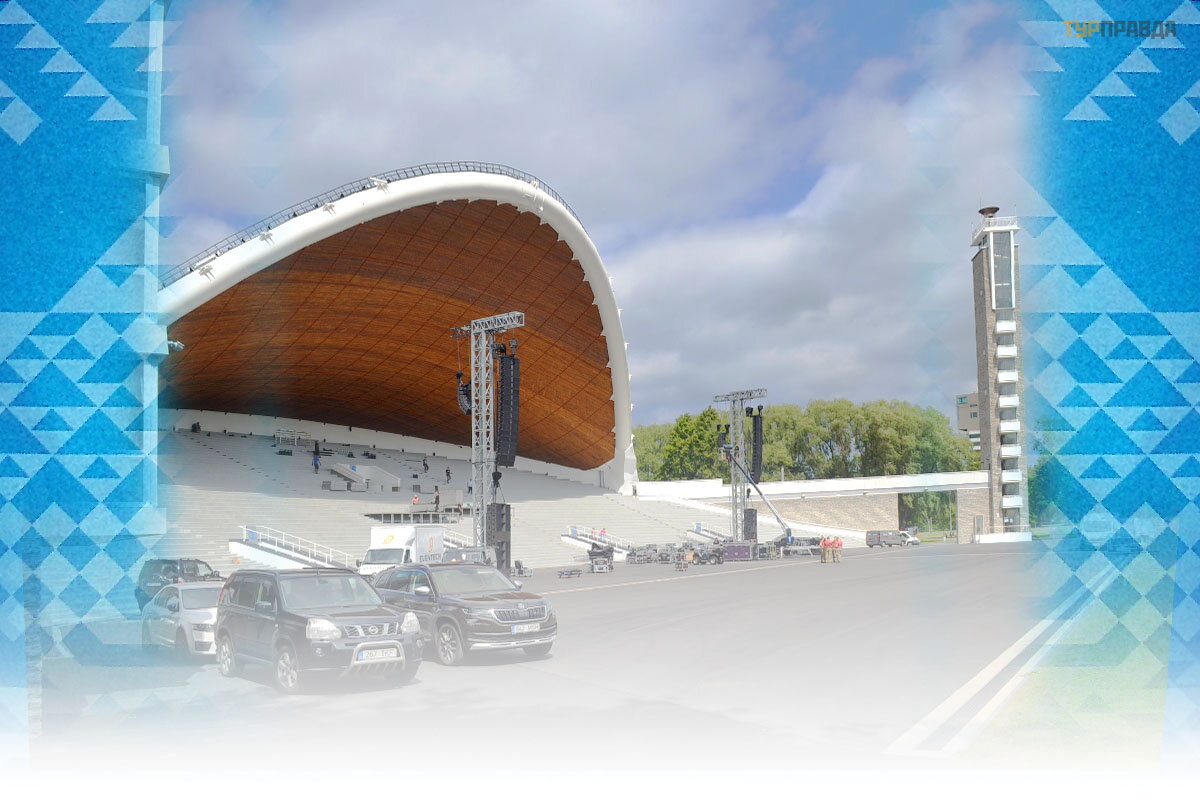 Preparing for the festival on the main stage of the Song Festival - the Song Festival Grounds. The stage was built in 1959 specifically for the All-Estonian Song Festivals and can accommodate 15.000 performers. In addition to performances by folk artists, the Tallinn Song Festival Grounds hosted such legendary performers as Michael Jackson and Lady Gaga.
Preparing for the festival on the main stage of the Song Festival - the Song Festival Grounds. The stage was built in 1959 specifically for the All-Estonian Song Festivals and can accommodate 15.000 performers. In addition to performances by folk artists, the Tallinn Song Festival Grounds hosted such legendary performers as Michael Jackson and Lady Gaga. A bit of history: the first Estonian song festival was held in 1869, in the city of Tartu. Its initiator was Johann Voldemar Jannesen, a cultural figure, the founder of Estonian journalism.
Together with their daughter Lidia Koidula, the first Estonian poetess, they founded the Vanemuine singing society, which became the organizer of the first Estonian song festival. In 1869.51 musical groups (choirs and orchestras) took part in the song festival - a total of 845 participants. Interestingly, only men's choirs and orchestras could take part in the first song festivals. Mixed choirs began to take part only from 1891. Since the first song festivals began to be held back in tsarist times, they were timed to coincide with some important and memorable dates for the Empire. From holiday to holiday, the number of participants in the event grew, and in 1923 the number of performers exceeded 10 thousand! It was from 1923 that the decision was made to hold Song Festivals in Estonia every five years. In 1934, a dance festival was added to the song festival, and since 1947 these two holidays have been going together,
forming a single colorful folk festival. During the entire existence of the holiday, its holding was canceled only once - in 1943 due to the Second World War.
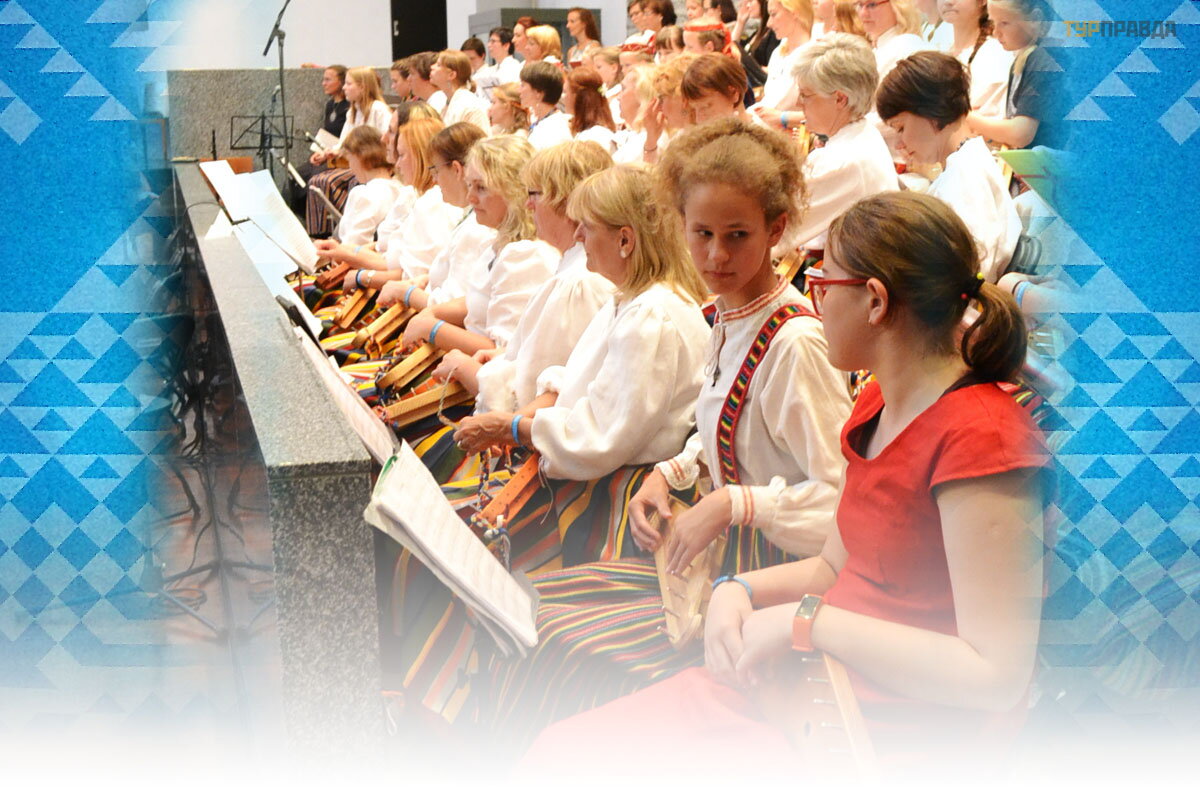 In addition to the main events of the festival, it was also possible to attend a concert of folk musicians and a concert “Night of the Kannels”. Kannel is an Estonian harp. According to legend, the first cannel was cut from a birch that grew on the grave of a murdered virgin; the soundboard was the bones of a large salmon, and for the strings they took the girl's hair. Among the Seto people, the kannel was considered a divine gift, so playing it was not forbidden even in Lent.
In addition to the main events of the festival, it was also possible to attend a concert of folk musicians and a concert “Night of the Kannels”. Kannel is an Estonian harp. According to legend, the first cannel was cut from a birch that grew on the grave of a murdered virgin; the soundboard was the bones of a large salmon, and for the strings they took the girl's hair. Among the Seto people, the kannel was considered a divine gift, so playing it was not forbidden even in Lent. In 2019.1020 teams with a total of more than 32 thousand participants took part in the XXVII Song Festival. The XX Dance Festival was attended by 713 teams, 11.500 participants.
The festival starts about a month before the main concerts in Tallinn with the so-called "fire procession". The fire of the holiday, lit in Tartu, travels across Estonia from county to county for thirty days before reaching the capital. If you manage to visit Tallinn during the next Song Festival, you will definitely see a piece of this fire at some concert or procession.
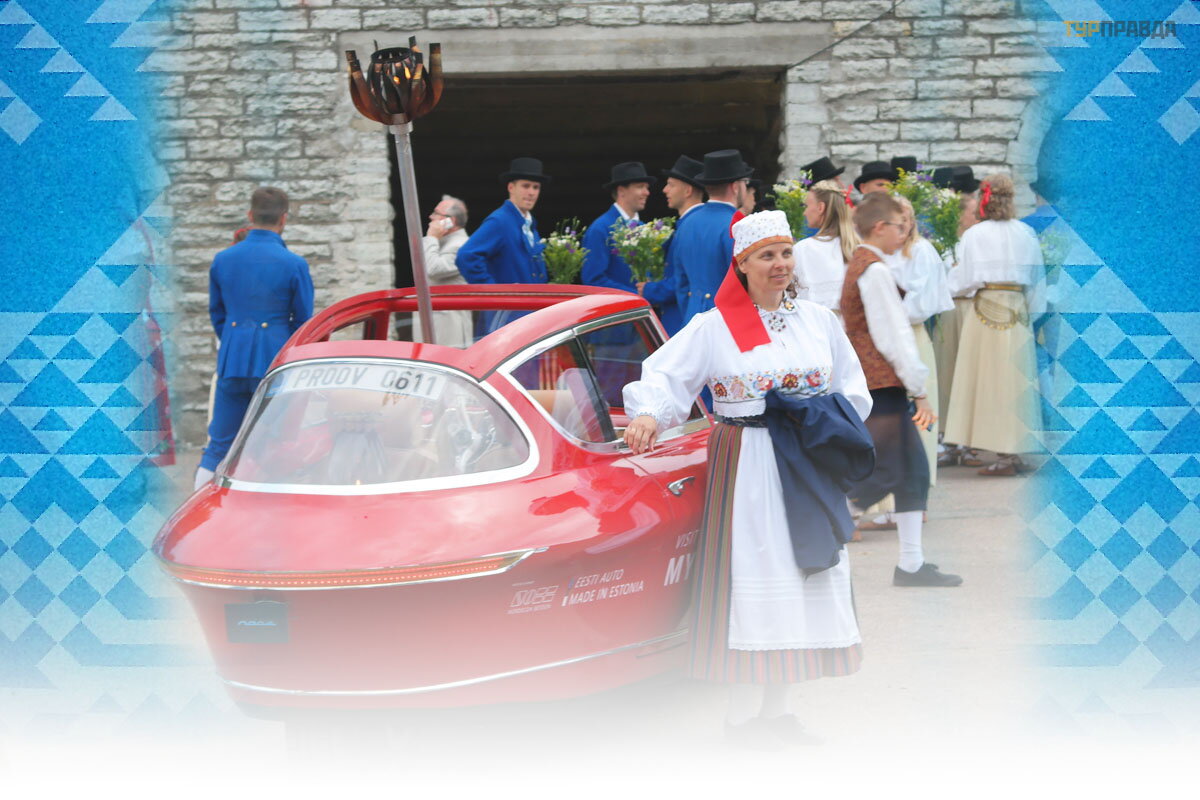 Before the beginning of the performance of the Dance Festival, the participants of the festival are photographed against the backdrop of the symbolic festive fire that has passed through the whole of Estonia.
Before the beginning of the performance of the Dance Festival, the participants of the festival are photographed against the backdrop of the symbolic festive fire that has passed through the whole of Estonia. The festival program begins with the Dance Festival at the Kalev stadium.
During the two-hour concert, dancers perform mass dance numbers. They dance almost without pauses - one dance smoothly flows into another, and a bewitching action unfolds on the sports arena.
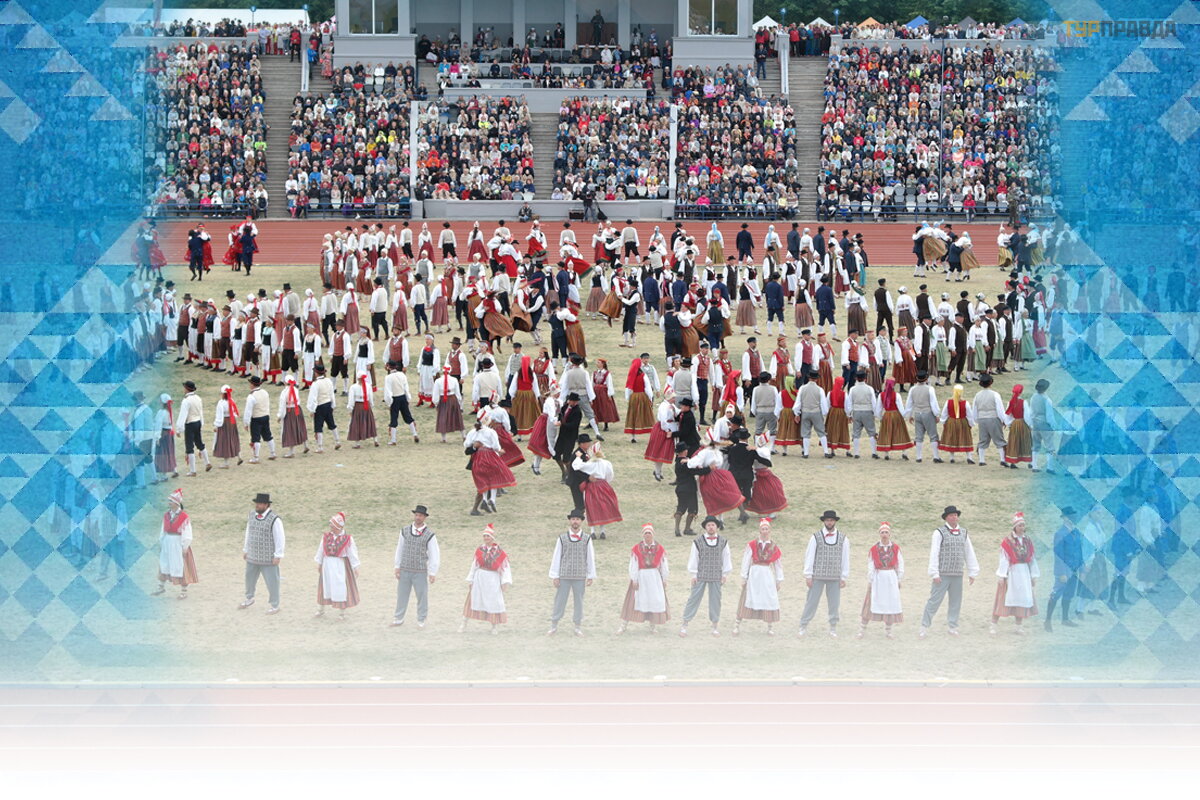 Invitation to Dance performance performed by 960 men and women. The performance was staged specifically for the 2019 festival.
Invitation to Dance performance performed by 960 men and women. The performance was staged specifically for the 2019 festival. It is interesting that everyone can take part in the dance festival, regardless of age and build - the main thing is to have a great desire and a little bit of talent. Each dance performed has its own story, and is repeated from holiday to holiday. From 500 to 1500 dancers participate in dance numbers, and this time 10540 people took part in the largest and oldest dance Tuljak (performed since 1934). By the way, for reference: the capacity of the Kalev stadium, according to Wikipedia, is 12 thousand people.
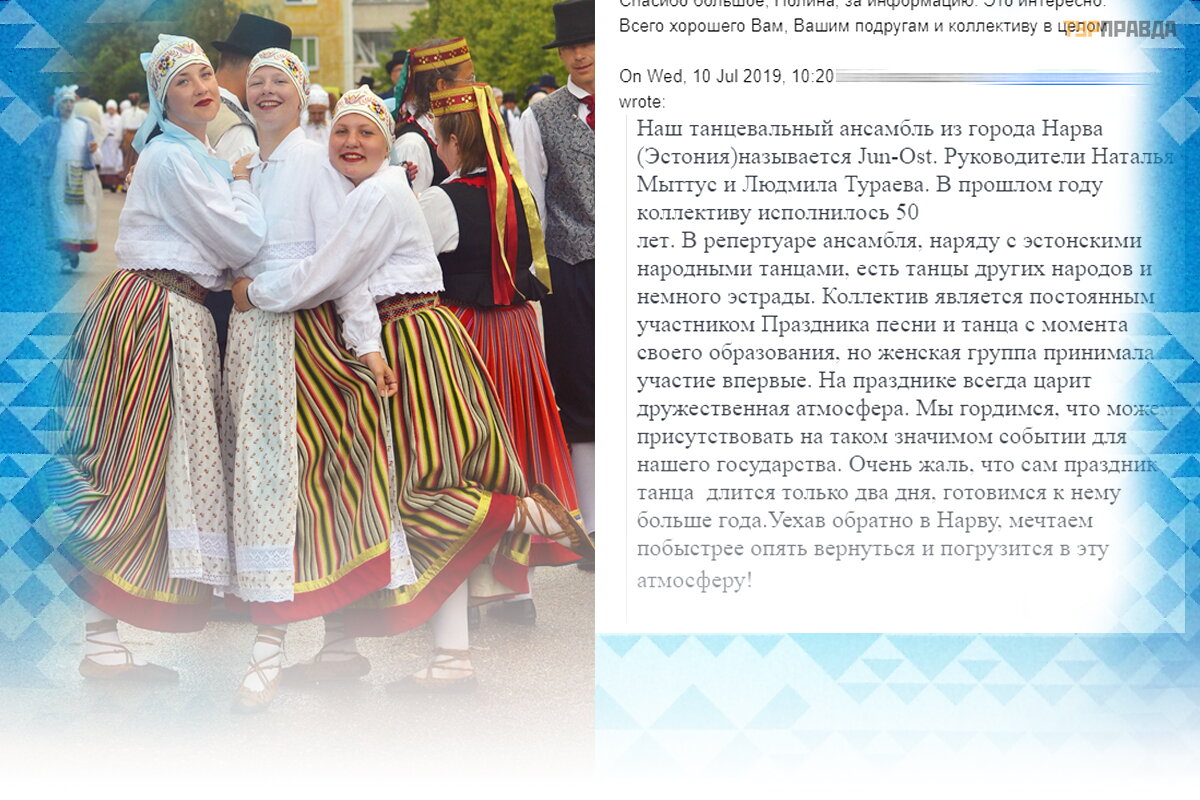 Firsthand, participant of the Dance Festival Polina Valashas: “Our dance group from the city of Narva (Estonia) is called Jun-Ost. Leaders Natalia Myttus and Lyudmila Turaeva. The team celebrated its 50th anniversary last year. In the ensemble's repertoire, along with Estonian folk dances, there are dances of other nations and some pop music. The team has been a regular participant in the Song and Dance Festival since its inception, but the women's group took part for the first time. There is always a friendly atmosphere at the festival. We are proud to be able to attend such a significant event for our state. It is a pity that the Dance Festival itself lasts only two days, we have been preparing for it for more than a year. Having gone back to Narva, we dream of returning as soon as possible and immersing ourselves in this atmosphere! »
Firsthand, participant of the Dance Festival Polina Valashas: “Our dance group from the city of Narva (Estonia) is called Jun-Ost. Leaders Natalia Myttus and Lyudmila Turaeva. The team celebrated its 50th anniversary last year. In the ensemble's repertoire, along with Estonian folk dances, there are dances of other nations and some pop music. The team has been a regular participant in the Song and Dance Festival since its inception, but the women's group took part for the first time. There is always a friendly atmosphere at the festival. We are proud to be able to attend such a significant event for our state. It is a pity that the Dance Festival itself lasts only two days, we have been preparing for it for more than a year. Having gone back to Narva, we dream of returning as soon as possible and immersing ourselves in this atmosphere! »All participants dance smoothly and clearly,
as a single living organism, and it is hard to believe that they had their first joint rehearsal only the day before the start of the first concert. In just two days of the dance festival, the participants gave three grandiose performances.
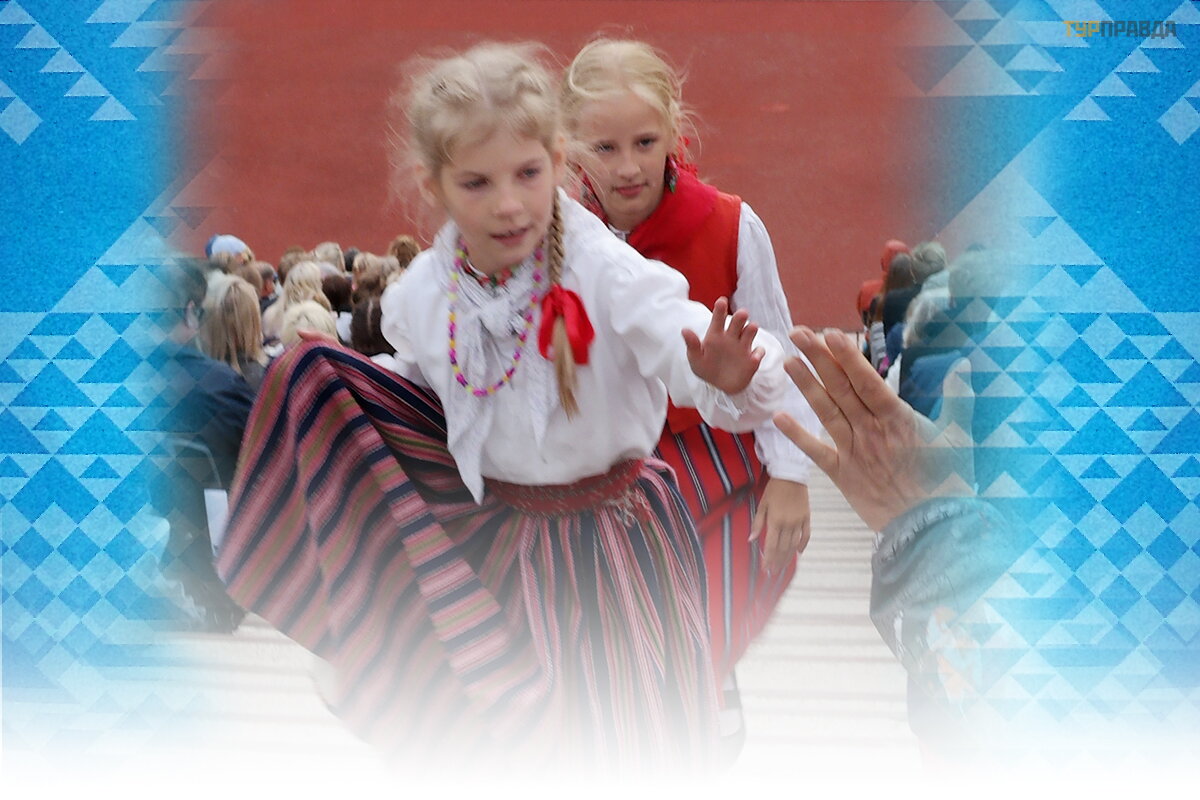 Spectators meet the youngest dancers - they offer their hands to them to clap and shout: “Tubli! " (Well done! ). Children are delighted with such attention.
Spectators meet the youngest dancers - they offer their hands to them to clap and shout: “Tubli! " (Well done! ). Children are delighted with such attention.
After the Dance Festival, the Song Festival comes into its own. Before the opening of the Song Festival, all participants of the festival (both singers and dancers) gather in a solemn procession and march 5 km from Vabaduse Square to the Singing Field, where the musical part of the holiday will take place. The festive procession is the favorite part of the festival among tourists. You can watch it for free for several hours.
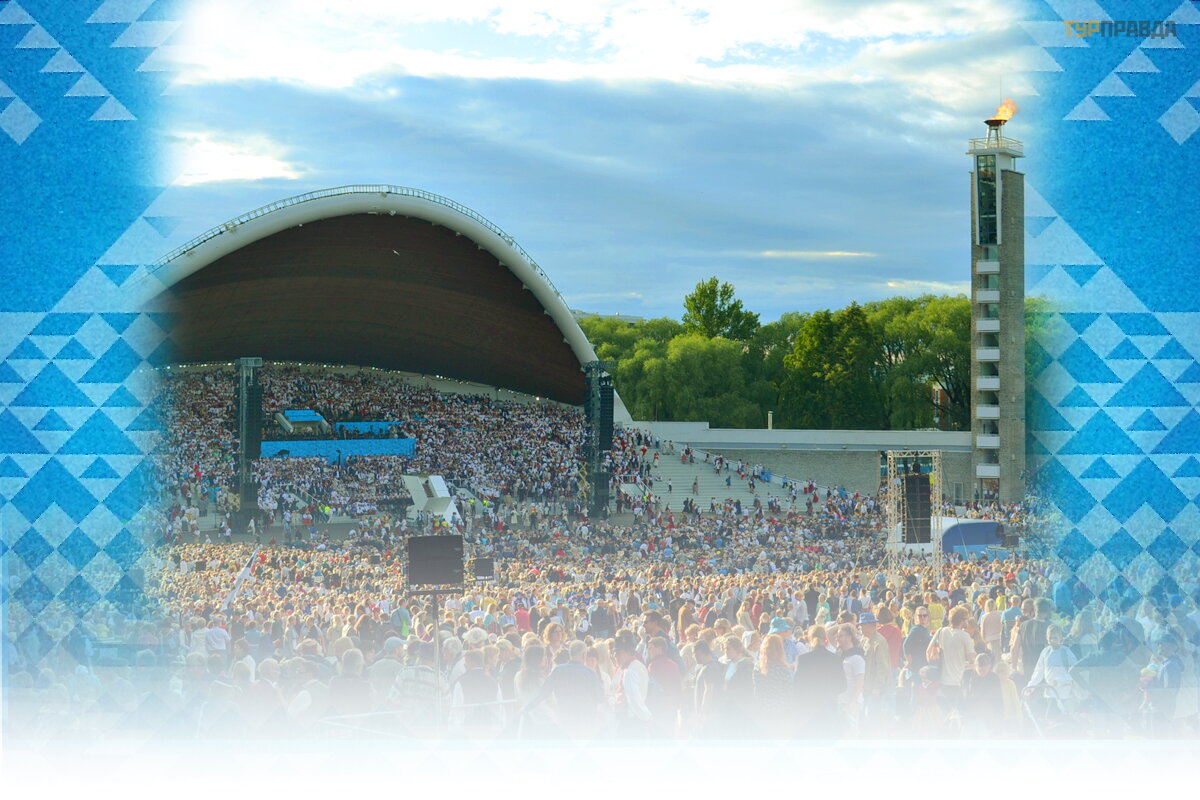 Singing field on the opening day of the Song Festival July 6.2019 year
Singing field on the opening day of the Song Festival July 6.2019 year
The locals like to spend the song festival in the format of a picnic. On the territory of the Singing Field, tents with food and drinks are opened, and the audience bring bedding with them, spread them on the grass and enjoy listening to their favorite tunes and singing along to the choir of many thousands on stage. This year, the size of the consolidated choir broke another holiday record - it consisted of 753 choirs and 24.500 singers.
In total, at the opening of the Song Festival, according to a press release,
about 100.000 people attended! And this is almost one tenth of the entire population of the country. It is generally recognized that the Song Festival contributes to the formation of the national spirit of the people of Estonia. Therefore, it is not surprising that the first persons of the state are not only present at the holiday, but also take direct part in it. For example, the current President of the Republic of Estonia, Kersti Kaljulaid, not only sang in the choir, but also took part in the festive procession.
I got the impression that the Song Festival is something deeply personal for every Estonian. As our Estonian friend, who himself participated in the festival twice, said: “This holiday is joy, this is our Estonian soul! »
My story may seem a bit formal. But I did not want to bother the reader with a large amount of text. I think that the photos from the song and dance festival are more eloquent than any words, and the text is just a small transcript of what is imprinted on them. In any case, “it is better to see once than hear a hundred times”, and the Estonian Song and Dance Celebration is worth coming to Estonia for! So take out your “checklist” and check the box next to 2024 - “visit the XXVIII Song Festival and XXI Dance Festival in Estonia”!
Well, in order for you to get the most out of the holiday, I will give you some practical advice:
were upset. Ticket prices vary from 15 to 60 euros.
Therefore, take also a waterproof bedding just in case, so as not to sit on the wet.
I wish you all pleasant travels and vivid impressions!
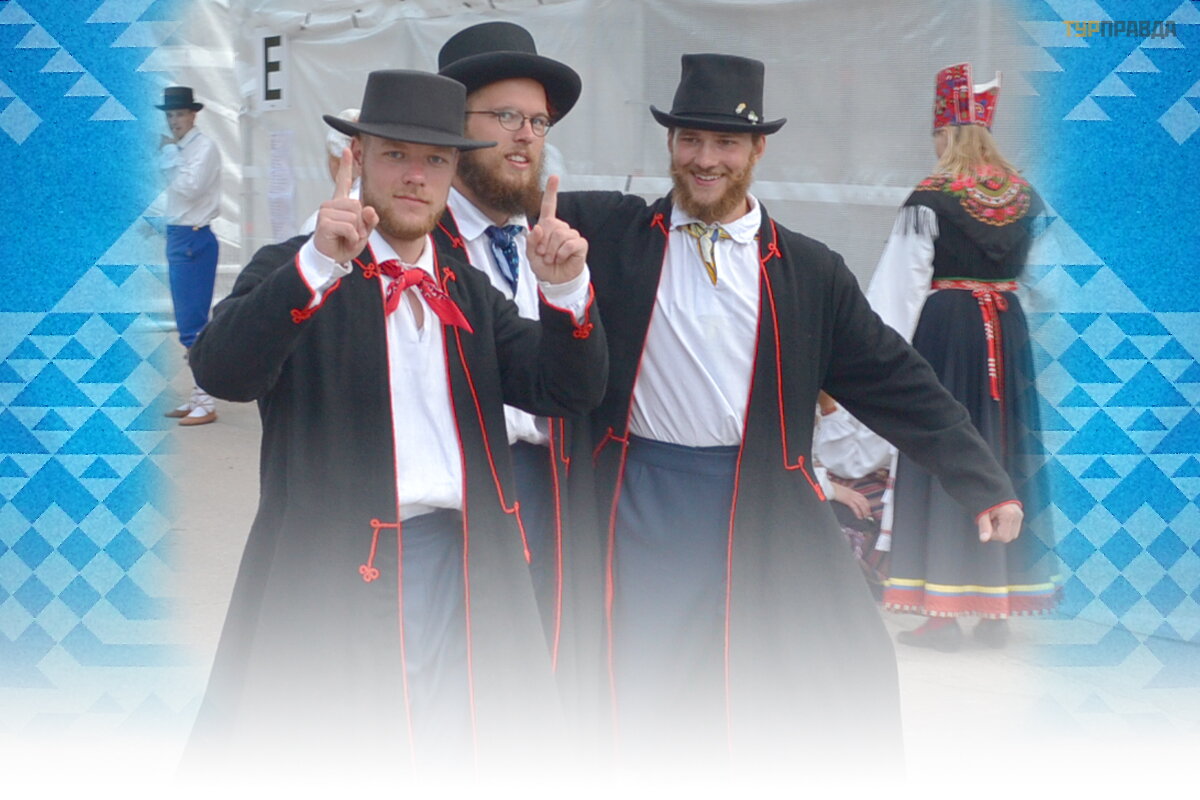 Nä gemist!
Nä gemist!
P. S.
I invite everyone to visit the forum thread “Notes of an Estonian summer resident” in which I share my personal experience about country life in Estonia.




















































































-
One day in Tallinn
Estonia, 22 august 2016
-
Beautiful Tallinn
Estonia, 15 November 2018
-
Golden autumn in Estonia and Finland
Estonia, 13 October 2018
-
Also, in its own way, an attraction.
Estonia, 03 January 2017
-
From Tallinn to Helsinki by ship.
Estonia, 07 august 2015

